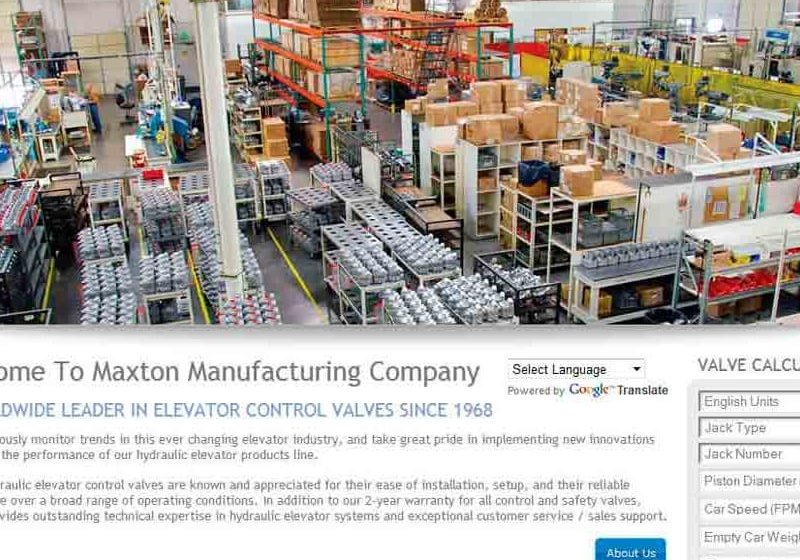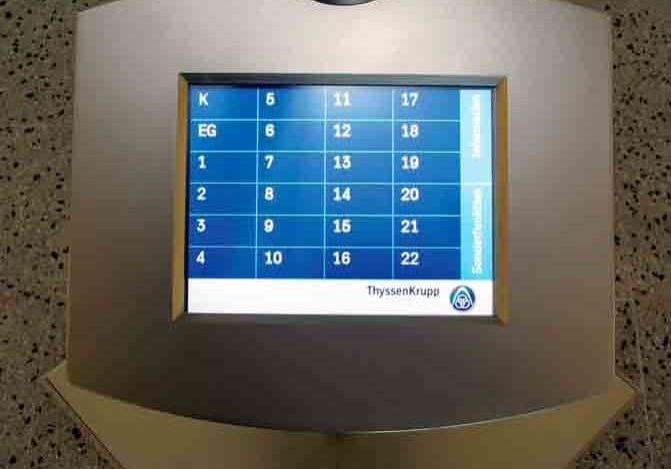Examines how hydraulic elevators can be modernized to become “green”
Hydraulic Elevators have been the backbone of the U.S. elevator industry since the 1940s. Now with the push of green building, sustainability, and energy efficiency trickling down to our industry, the hydraulic elevator seems to be taking most of the negative blows. The question is, “Why?” Older traction elevator systems are just as likely to be less efficient, green and sustainable as older hydraulic elevators. If an elevator, no matter the type, is not new or near new, then it is likely to be less efficient, less green and less sustainable. That’s the nature of product evolution. So, let’s not throw out the baby with the bathwater with regard to hydraulic elevators and focus on how to build, retrofit and modernize this dependable and cost-effective workhorse of our industry.
What makes a hydraulic elevator the economic low-rise green solution? Let’s start with the understanding that no one component or aspect will be the complete answer to a “greener” hydraulic elevator. You must look at the entire package or system as a whole, while considering the application for use. Then, answer the question as to which options suit the green goal when considering cost, use and performance of the system.
A Greener Current Hydraulic Elevator
Let’s look at your current hydraulic elevator and review “green methods” that have been available to the industry for years but are often not applied:
- Regular scheduled maintenance
- Substituting bio oil
- Proper control-valve adjustment
- Ventilation of machine room, tank placement and tank heaters
The cost savings of regular maintenance trumps the run-to-failure method; however, this is the most overlooked and ignored solution. Knowing your monthly scheduled maintenance cost, catching problems early, making proactive adjustments during off-peak use and optimizing efficiency of the elevator system pays dividends over the alternative. A reactive elevator owner ends up paying more for major part replacements, energy use, increased downtime, angry tenants and emergency labor rates.
Substituting bio hydraulic fluid (bio oil) is another green alternative with a much better environmental impact than the standard petroleum product. Many bio oils are fully biodegradable, can reduce oil-spill remediation costs, are less flammable, are based on renewable and recycled resources, are produced from U.S.-grown crops, and reduce dependence on imported petroleum oil. In addition, these green benefits come with increased oil-performance factors like higher lubricity, higher viscosity index, heat reduction and reduced energy usage during operation, in some cases. The aforementioned positive benefits do come with a US$4 to US$5 higher cost per gallon, but in the big picture, they are a viable option.
When it comes to having your elevator run more efficiently, think about proper control valve adjustment. While valve adjustment has to do with the ride of the elevator, it also has a great deal to do with eliminating wasted energy usage. When a valve is set properly, you minimize oil bypass time and minimize pump and motor run times, while reducing heat in the system and surrounding environment. Each of these factors contributes to unnecessary wasted energy on the elevator, as well as increasing cooling costs for heating, ventilation and air-conditioning (HVAC) to counter the heat released from the elevator system.
Other contributing factors often overlooked are the ventilation of the machine room and tank placement. Done incorrectly, this may contribute to a compounding heat problem. Many systems have gone to submersible (versus dry) pumps in power units that allow for less heat dissipation by design. This is where many go down the costly path of an oil-cooling unit or air-conditioning, treating the symptom and not the problem. Exhausting/ventilating heat from the room and moving air around the tank make for cooler system operating temperatures at a much lower cost and reduced energy usage. The tank should be at least 2-3 in. from the wall on all sides. This allows for natural heat dissipation, and a small fan can be added to move the air between the wall and tank, increasing the cooling affects. Believe it or not, adding a tank heater (versus a viscosity control device) to maintain an optimal oil temperature can actually cool a hydraulic system and reduce energy use when you have large temperature swings.
The hydraulic elevator has many positives when it comes to the economic, low-rise, green solution.
Rapidly renewable materials, local/regional wood types, urea-formaldehyde-free cab panels, recycled steel products, and even the adhesives and sealants used with low volatile organic compounds can contribute to better air quality in the elevator and building.
Green Retrofitting and Modernization
Technological advancements to help make existing hydraulic elevators green through a retrofit or modernization include the following. (Don’t forget to incorporate the basics mentioned above, as they apply for all applications.)
- New controller with automatic shutoff for lighting and fans during standby
- LED lighting
- New packing, control valve and power unit (AC/variable-voltage, variable-frequency technology)
- Double-bottom jacks and leak detection
A moderate-cost option, a new controller with solid-state starters (versus contact starters) can allow for less maintenance of contact replacement and soft starting of the elevator, using less energy. Automatic shutoff (sleep mode) controls lighting, signals and ventilation during standby to save energy and cost. Energy calculators can show the annual savings this feature offers, sometimes upward of US$500 per year. To put this in perspective, a new hydraulic controller ranges from US$2,500 to US$3,500.
LED lighting is a simple item with several green benefits. When compared to incandescent and compact fluorescents, LED lights reduce KWh and operating cost by at least 50% while increasing life span by as much as 40 times. Plus, the LED bulbs contain no mercury, which is a toxic hazard that requires special disposal consideration so as not to harm the environment. This is the lowest cost and simplest corrective action to making your hydraulic elevator greener.
Some new packing materials offer lower breakaway friction, which requires fewer amps and, therefore, less energy used by the pump to move the piston in the up direction. Every run by the elevator using this packing saves you money. In addition, some of these new materials have extended operating life, increased operating temperature tolerances and, therefore, reduce maintenance costs versus standard packing seals. Altogether, that makes for a greener hydraulic elevator at a low cost.
The control valve is an integral component that will provide benefits with an upgrade. This upgrade can be done with a new valve replacement. One example of product evolution is a post-1998 Maxton UC4 control valve. That year, an up-transition compensation circuit was added that softened the transition, increased leveling speed in a loaded condition, reduced time in leveling and the overall flight (floor-to-floor) time. In short, these improvements reduced pump run times and heat, which decrease the elevator energy usage on every run and the need for HVAC cooling.
A new power unit will “green up” your elevator by incorporating more advanced motor technology and increased pump efficiency, and a new valve will increase overall elevator performance. This upgrade is the most common hydraulic modernization method when it comes to improved operation, energy savings and ride of the elevator. Costs will average US$3,500 to US$6,000 for passenger elevators, depending on the specifications of the power-unit options and system. If your power unit is more than 15 years old, you could see a return on investment in less than three years from reduced energy usage alone.
Double-bottom jacks have become part of a code change to prevent environmental contamination and are required in most areas within the U.S. This soil- and water-contamination preventative action helps address the leaking of oil through in-ground jacks that have deteriorated over time as a result of electrolysis. A less expensive method to catch oil leakage can be achieved through leak-detection devices that monitor oil levels to account for loss over time or when an emergency line break occurs. As a rule, the accountability of oil should be logged manually, tracking every gallon added and taken out of a system; however, this only tracks slow oil loss.
Benefits of a New, Green Installation
- Most economical initial package costs
- Lower maintenance and repair costs
- Lower energy demand (during lift and standby)
- Hole-less jack option
The new construction scenario should involve all the latest and greatest hydraulic-elevator system advancements and costing. All of the current, retrofit and modernization basics mentioned above also apply for new hydraulic-elevator installations.
No one component or aspect will be the complete answer to a “greener” hydraulic elevator.
The cost of a new hydraulic installation (versus that of a traction or machine-room-less [MRL] traction unit) can be a sticky subject, and there are several factors to consider. However, quotations from elevator suppliers nationwide often economically favor the hydraulic elevator for new two-to-four-stop packages. Also, when looking at maintenance and repair costs over the life of the elevator, the hydraulic model is less expensive and requires less work. One of the majors in the elevator industry published a lifecycle analysis study and brochure comparing hydraulic and MRL traction elevators on several levels. In a two-to-three-stop application, it found the hydraulic elevator to have fewer call-backs and fewer annual calls over the life of the unit. When it comes to economic energy usage, the study found that in two-to-three-stop applications, the example MRL traction unit used 10% more primary energy than did a hydraulic elevator. Not until the height of a six-stop application did their MRL traction unit gain the advantage.
Another aspect not to overlook is standby energy usage, when more than 80% of the total elevator energy usage happens. This is a huge factor to account for with low-rise, low-use applications, according to a Swiss study. Hydraulic elevators tend to present a very low standby energy consumption, which benefits the low-rise application. Thus, the application, number of stops and overall use must be considered closely when picking the correct capital investment. There is no “one size fits all” if you want to make a wise, economic and green decision.
The final option is the hole-less jack. Though a high-cost option, its biggest green benefit is the elimination of drilling a hole and placing the oil-filled vessel in the ground. Additional benefits include the reduced amount of oil required to operate a hole-less hydraulic elevator versus an in-ground unit. This means less oil volume to spill, leak and replace. Finally, the hole-less jack provides the ability to visually inspect the jack(s) for possible seal leaks and/or wear more easily.
Conclusion
The hydraulic elevator has many positives when it comes to the economic, low-rise, green solution. Whether you have a current hydraulic elevator that needs help, you’re looking at repairs and modernization, or a new elevator is in your plans, the workhorse of our industry still has a great deal to offer.
Get more of Elevator World. Sign up for our free e-newsletter.








